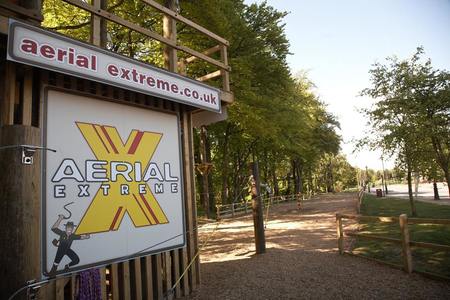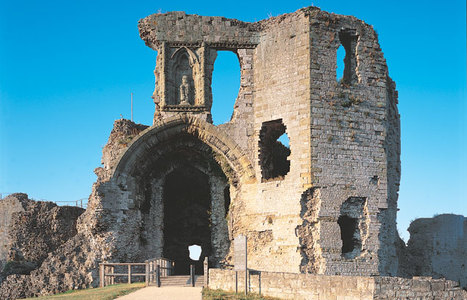Denbigh’s finest feature is its striking triple-towered great gatehouse.
Want to get a historian really excited? Mention Denbigh’s triple-towered great gatehouse. Probably one of the seven wonders of Wales. We think you’ll agree. Striking. Crowning a steep hill above the medieval town, the castle is now in the guardianship of Cadw.
Along with over half a mile of town walls, Denbigh Castle is a classic fortress of Edwardian proportions. Edward I’s successful 13th-century campaign in the region was cemented by the creation of an English borough in Denbigh from 1282 onwards. He simply built on top of what was a traditional Welsh stronghold. In so doing, he made sure all traces of Dafydd ap Gruffudd, the previous unlucky incumbent, were removed for ever.
Henry de Lacy, one of the King’s loyal commanders, was given control of the area and had the task of building the new castle. He couldn’t go far wrong with the king’s master mason, James of St George, at his side. It wasn’t all plain sailing however. A Welsh rebellion, led by Madog ap Llywelyn, captured the partly-built castle in 1294 but Edward’s dominance and the castle-building programme were soon restored. You can see for yourself the two phases of building work. The post-rebellion work is marked by different colour stone, thicker curtain walls and a hint of Caernarfon-style angular towers.
Please note, families of children with disabilities can obtain free admission for one disabled visitor and one carer as standard. Proof of DLA may be requested.
Access Information: Main area of castle is wheelchair accessible, induction loop available, disabled toilet, guide dogs welcome.
Free admission for foster families.
How to Redeem: Foster families must produce a valid Max Card on the day of visit. Terms and Conditions: • Foster families entitled to free admission for up to two adults and all accompanying children.
• Not to be used in conjunction with any other offer.
• Management reserves the right to refuse admission.












